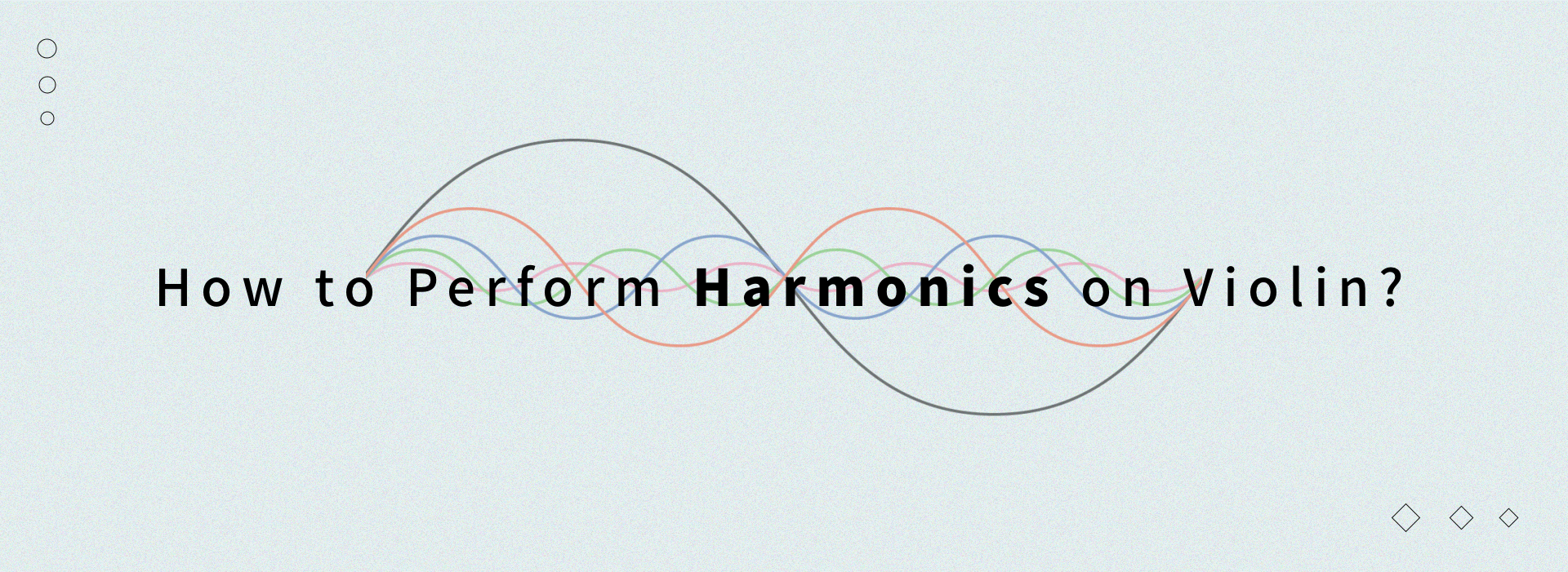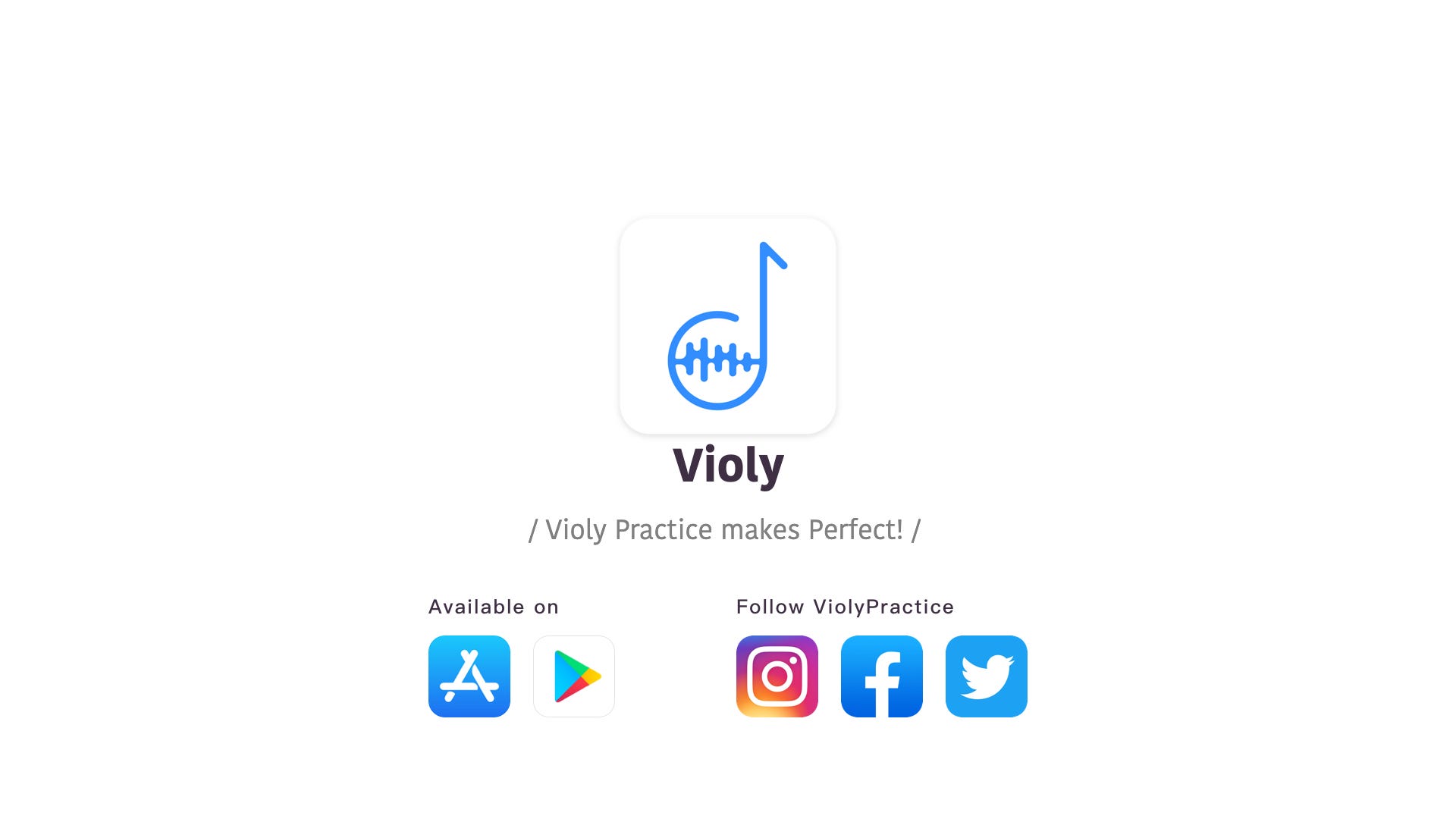How to Perform Harmonics on Violin?
As a violin learner, personally I think one of my toughest experiences about the instrument is learning to perform harmonics. But it must be admitted that harmonics can be regarded as the most beautiful sound in violin playing.

When a violinist plays a note on a violin string, the string starts to vibrate very fast.
This vibration makes the air vibrate and the sound waves travel to our ear so that we can hear it. If the note were absolutely pure the string would move in a perfect sinusoidal shape and produce only one frequency, but instead there are multiple frequencies being produced at the same time along with the main one. The note played on the violin string makes the string vibrate in a very complicated way. The higher the note, the faster the string vibrates. An A above middle C (the violinist’s A string) vibrates at 440Hz (440 times per second). This is the “fundamental” or “first harmonic”. The second harmonic vibrates twice as fast (ratio 2:1): 880Hz. This gives an A an octave higher. The third harmonic will give a ratio 3:2. This will be an E (an octave and a fifth above the fundamental). The higher the harmonic the quieter it is, but the ratio is always a whole number.
A violinist can place his finger very lightly on a string so that it divides the string into half.
A violinist will hear a harmonic (the note an octave higher than the open string). By placing his fingers in other places he can get more harmonics, e.g. by touching the string a quarter of the way down he gets the next harmonic. “Artificial harmonics” can be played by stopping a string with the finger in the usual way (so that the string is now shorter) and placing the little finger farther up the string to get a harmonic of the stopped note. Artificial harmonics are very hard to play well. The higher the pitch, the harder to play it with great effect.
Practicing tips for harmonics on violin
But reading the description only cannot give learners an objective understanding of what to do in detail. Here are some practicing tips for harmonics on string instruments especially on violin:
Keep your little finger in a completely relaxing condition, straighten it and try your best to cover the point of harmonics on the string with your finger pulp. In the meantime, your thumb and index finger should hold the neck firmly. The necessary basis for performing is that you need to get accustomed to playing with relaxed finger when it comes to harmonics.
Your finger is supposed to stop the string accurately. Even if the deviation is tiny, the harmonics cannot be played well. Therefore, you need to slow down your performing when practicing harmonics and make sure every harmonic is clear and accurate. Vague or hoarse tones should be avoided.
When you are performing harmonics, remember to keep your bow close to the bridge. Besides, your bowing is supposed to be swift. It should be kept in mind that when the pitch of harmonics is higher, your bow should be closer to the bridge and bowing should be swifter as well. But never make your bowing too hard. Otherwise, the effect of playing can be impacted or even damaged.
Keep your bow steady instead of letting it swing randomly while playing. Or the vibration may be destroyed. Apart form that, your bowing needs to be smooth instead of stiff. Stiff bowing may lead to fluctuating vibration.
While playing artificial harmonics, you need to maintain a correct hand type of a fourth. With your index finger stopping the string as usual and your little finger being placed lightly on the string, remember to play within the fourth position as well. Sometimes artificial harmonics are also played on the fifth position on string D and G. But do remember not to break the normal ratio.
Performing double-string harmonics can be relatively difficult. As for the skills, you need to play an artificial harmonic using index finger and little finger, as well as a natural harmonic using middle finger or third finger at the same time. You are supposed to pay attention to the contact area between bow hair and strings together with dynamics while performing.
Try vibrato if you are already skilled. The sound of harmonics can become even more attractive and less stiff when vibrato is used. Vibrato can resonate well with vibration.
Harmonics can provide unique feelings for both learners and listeners.
In general, as a series of special notes, harmonics can provide unique feelings for both learners and listeners. The role played by harmonics is irreplaceable. The special effect of harmonics gives a chance for performers to explore more performances of string instruments, expand the range of violin and intensify the expressiveness in some way. Hopefully the practicing tips above can be effective and do help your performing.
Have a HAPPY violin practice!
#ViolyPractice makes Perfect!!
Follow us on: Violy.app
Feel free to contact us at Support@Violy.app
